Doing a Kruger Park safari was never on my bucket list! But it turned out to be one of the greatest experiences of my life. Read about my extraordinary safaris at Sabi Sands and Kruger National Park and you will see why you must visit these places when you’re in South Africa.

Lions, zebras, giraffes, rhinos, elephants, hyenas and many other animals that you may have never seen before.
They are not in cages, a safari guidebook or a YouTube video. Instead, they’re roaming freely, sunbathing, eating, crossing roads, cuddling, hunting, playing and even fighting just in front of you.
Some of them get so close that you feel like you could touch them. But you’re allowed “only” to observe and learn about their lives.
Are you ready for a Kruger Park safari? It’s going to be one of the greatest experiences of your life!

Table of Contents
Sabi Sands and Kruger Park Safari: a once-in-a-lifetime experience!
After exploring the city of Cape Town and spending a weekend in Johannesburg, I headed to Mpumalanga, the province where I would go on safari for the first time in my life.
I knew I wanted to do a Kruger Park safari, but there were so many Kruger National Park tours from Johannesburg that it confused me completely.
I spent a lot of time researching on the internet and asking advice from some South African friends, and in the end, I opted for a 4-day / 3-night Sabi Sands and Kruger Park safari.
Firstly, because it would give me different experiences (sunrise, afternoon, sunset and evening safaris and also a bush walk), secondly the price was reasonable.
Transportation, meals and lodgings were included and, in addition to Kruger, which is considered the best South African National Parks, I would also visit Sabi Sands, the most famous private game reserve.

Sabi Sands Game Reserve
Sabi Sands is a 65,000-hectare private game reserve and a premier safari destination that shares an unfenced border with the world-renowned Kruger National Park.
It was the first private nature reserve established in South Africa, proclaimed in 1898.
Featuring a savannah landscape with watering holes, dry riverbeds, lowed woodlands, and the perennial Sabi and Sand rivers, Sabi Sand is home to the famous “Big Five” (elephant, rhino, lion, leopard and buffalo), a great variety of antelopes, zebras, giraffes and some of South African’s ultra-luxurious safari lodges.
The advantages of staying in Sabi Sands are that only guests are allowed in the reserve, the lodges are very comfortable and the guides are highly trained and can drive off-road (something that is strictly prohibited in The Kruger National Park).

My Sabi Sands Safari Experience
My 4-day / 3-night Sabi Sands and Kruger Park safari package included two game drives in Sabi Sands: a sunset/evening drive on the first day and a sunrise drive with a bushwalk on the last day.
Around 3:30 PM the guide arrived at Tydon Eco Camp in a 4×4 roofless open-side safari vehicle with a capacity for 9 people for my first game drive.
I was very excited to be finally going on a safari!
The best things about having a guide are that they are passionate about wildlife and can explain everything about it to you, they have the ability to spot animals, they know the park and are also able to talk on the radio to other guides to find out where the animals are. The guide also gives some safari tips that are very helpful, whether you are a first-timer or not.
After few minutes we saw some zebras, impalas and for the first time, I saw a kudu. I didn’t even know that this animal existed before.
The beautiful and huge antelope was resting, perfectly blending in with the vegetation. It took me a while to see it.
I was truly amazed and learned the importance of spotting animals when you’re doing a safari.

We saw more antelopes and when we found a giraffe, I realized the true advantage of driving off-road. The guide not only got closer to the animal but also parked the vehicle in a better position for pictures.
As the sun was going down, we parked in an area to watch the sunset, eat some South African snacks and have sundowners.


After the sunset, we continued our game drive, when the guide received a call on the radio to say that some people had spotted a leopard.
He rushed and drove off-road, passed through some small bushes and found the leopard close to a tree crawling very slowly.
It was the first time in my life I saw a leopard and it was just a few meters from me. I was thrilled!
But, as we couldn’t see the leopard’s prey, we eventually decided to move on in the twilight.
The night fell and we were still in the bushes. We could see only rabbits jumping now and then, but our super skilful guide surprisingly was able to spot a chameleon in a tree, not only once, but twice. I don’t know how he managed to see a chameleon in a tree at night…
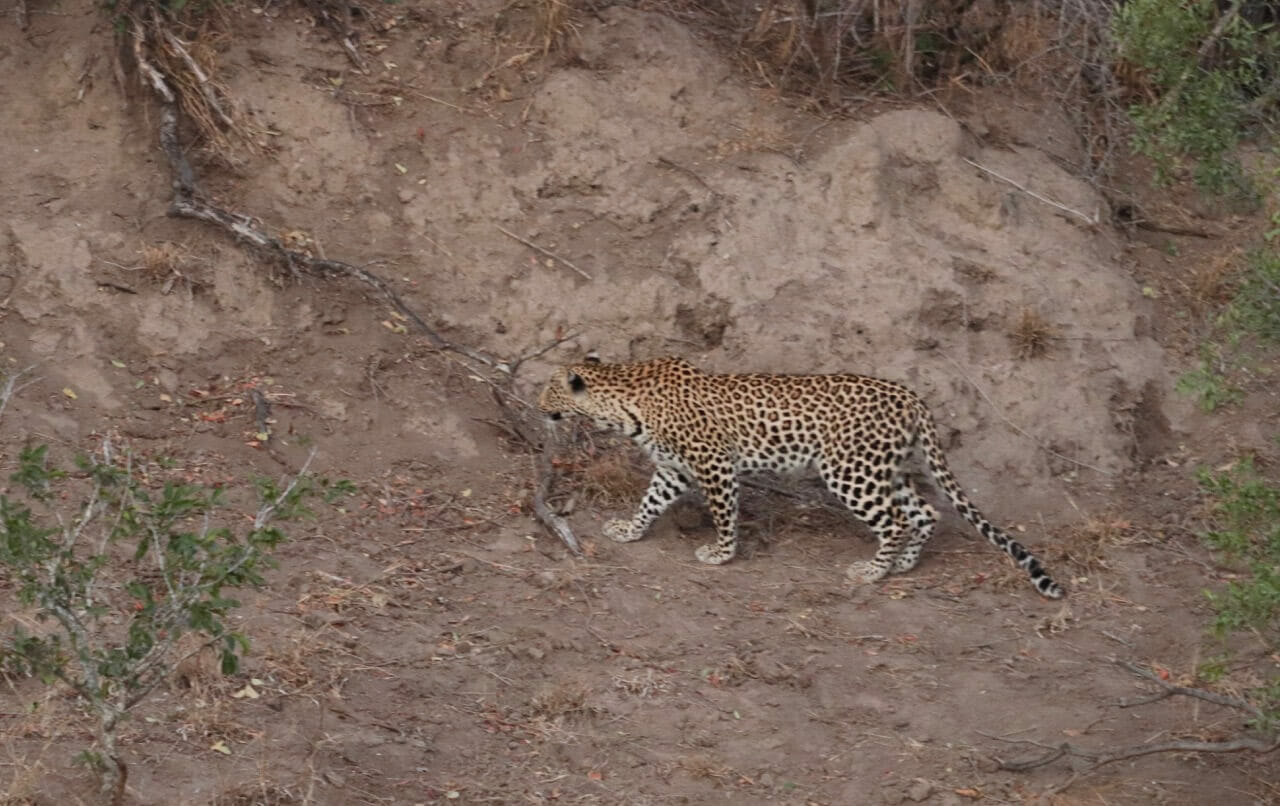

The second time I returned to Sabi Sands was for a bushwalk. I was really looking forward to it!
I could not miss another opportunity to be face to face with wild animals in their natural habitat.
We arrived at Sabi Sands minutes before sunrise. Seeing the sun rising in the bushveld was very picturesque!

But despite our high expectations, the game view area was very quiet and we only saw a herd of buffalos, kudus and blue wildebeests.
We parked the car and started walking in the bushes. I was a bit scared, to be honest, but hoping to see some rhinos, elephants and even lions.
Unfortunately, the bush walk was even quieter. We only saw a few kudus and they ran away as soon as they heard our steps… I was so disappointed!
However, during the bush walk, I learned very interesting facts about hippos and other animals, South African traditions, etc.
I didn’t know that in the past pregnant South African women would make tea with elephant stool when they were not feeling well, nor that hyena excrement is white because of the bones they eat and that giraffes eat it to compensate for the lack of calcium in their diet.

I could write a post just about this experience. Explaining how guides use footprints to identify animals and also know when they were in that area and the direction they took, etc.
A bush walk is an incredible experience and I really recommend doing it when you go on a safari!
Kruger National Park
Even if you’ve never been to South Africa, you might have heard of the Kruger National Park.
Kruger is one of the largest game reserves in Africa, situated in the provinces of Limpopo and Mpumalanga in northeastern South Africa. It covers an area of 19,633 Km² (7,580 miles²), extending 360 Km (220 mi) from north to south and 65 Km (40 mi) from east to west.
The park has an immense botanic diversity with over 336 tree species and a great variety of animals that includes approximately 147 mammal species, 114 species of reptiles, 517 bird species, 219 butterfly species and 50 fish species.
If you’re wondering about the possibility of seeing the “Big Five” during a Kruger Park safari, wonder no more. There is an estimated 1,500 lions, 17,000 elephants, 48,000 buffalos and 1,000 leopards in Kruger National Park.

The park is open for day visitors, but if you prefer you can stay in one of the camping areas, safari tents, bungalows, cottage, guesthouses or luxury lodges inside the park.
Kruger National Park is open daily, there are nine main gates and the entrance fee is R372 (US$ 27.30) per adult and R186 (US$ 13.60) per child per day.
My Kruger Park Safari Experience
On my second day at Tydon Eco Camp, I went to Kruger for an early morning safari. It’s my first Kruger Park safari and we started just before the sunrise.
As soon as we entered through the Paul Kruger Gate we saw a hippo. The guide explained that is very rare to see a hippo outside of the water because of its sensitive skin.
Then we saw many impalas, dozens of baboons playing in a tree, spotted hyenas running in the road, different eagle species, giraffes, mongooses, elephants, kudus and George, the hippo playing hide and seek in his “private pool”.
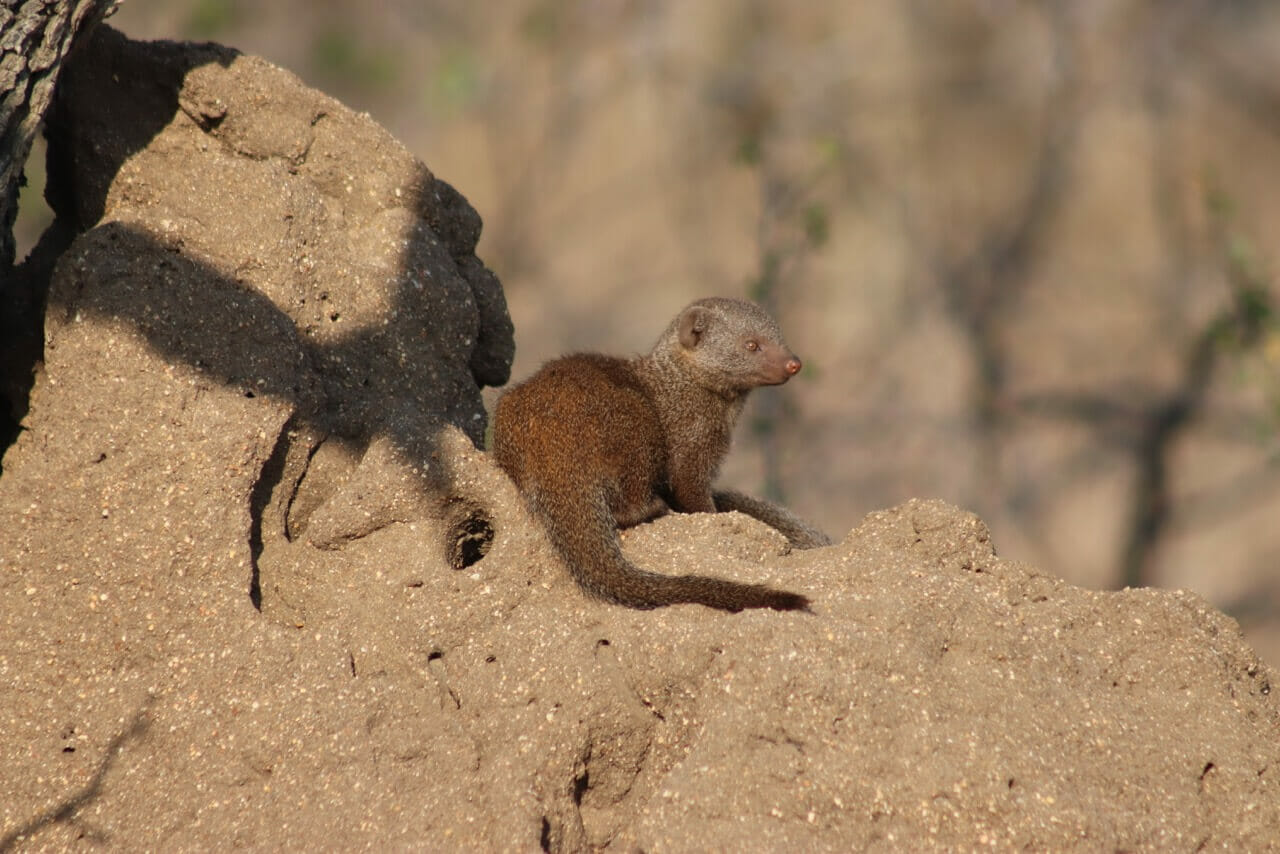
When we saw three rhinos, I thought they were black rhinos because of their skin color, but the guide explained that the difference isn’t perceptible on the skin color. The major difference is in the shape of their mouths (black rhinos developed a pointed lip while the white ones have a flat and wide lip).

I was happy for seeing two of the “Big Five”, but a bit frustrated for not seeing any big cats.
We had a break in one of the very few areas you can get out of the vehicle during a Kruger Park Safari and before going back to the lodge we stopped at the Skukuza Rest Camp where there are some facilities, including a restaurant with a beautiful river view, bathrooms and a souvenir shop.

The morning was good, but I didn’t know what to expect in the afternoon.
Because of the high temperatures, some animals go to waterholes to drink water while others, such as elephants and buffalos, go to the river to take a bath and cool down.
Consequently, we saw many elephants and buffalos at the river and to our delight, a herd of elephants, including some babies, left the river and crossed the road just in front of our vehicle.

We saw some crocodiles, more giraffes, kudus, and I also spotted a leopard.
Instantly, I screamed and asked the guide to stop the vehicle.
I couldn’t believe that I spotted the feline behind the bushes staring at an impala. The poor antelope made some noise to let the leopard know that he was in her sight as well.
The guide explained that the leopard might not attack the impala, because it prefers springing a surprise attack.
Suddenly the road was full of cars with people trying to see the leopard.

Yet the best was still to come.
The guide received a phone call saying that some people saw a lion pride. He rushed to the place and when we got there 8 lions were lying in the road.
OMG, I was completely in awe!
They looked so cute and harmless that you want just to pet them.

After some time they stood up and started walking. The big male that was sleeping exactly where we parked the car joined the group. We wanted to follow them but the guide decided to take another direction. I was extremely happy and pleased!
That was certainly the best day of my Kruger Park safari and one of the most unforgettable moments of my trip to Africa.
Before we left the park we saw some monkeys cuddling and playing in the road, an endangered bird specie, a rhino, a lioness with two cubs and the sunset.
Yes, we saw the Big Five. What a big day!
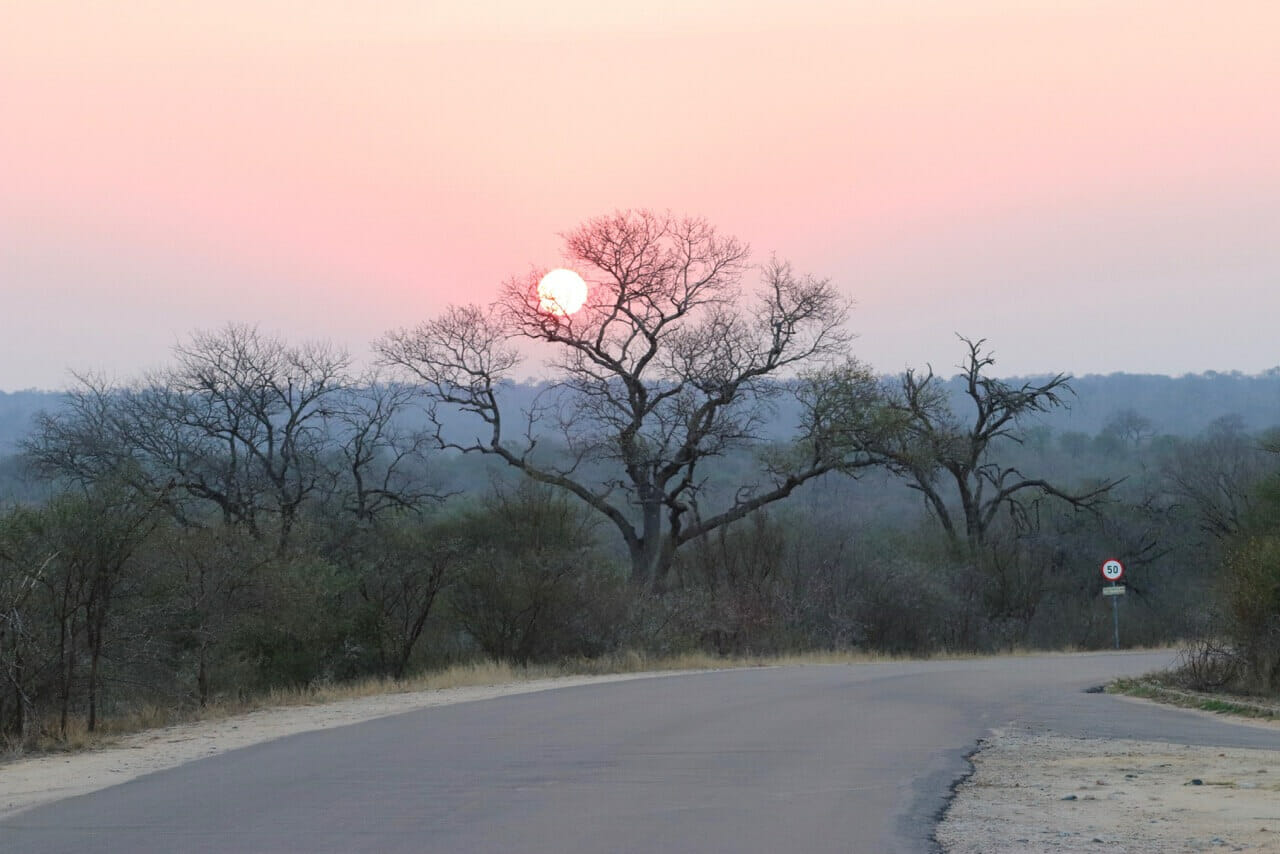


After that fantastic and unparalleled day, I wasn’t expecting that much from the second one. I really just wanted to see more big cats.
And as soon we started our Kruger Park safari, we heard a buzz about a leopard sleeping in a tree.
When we arrived, the road was congested, as it is every time someone spots an animal.
The leopard was sleeping undisturbed in a tree with his full belly.

We saw more hyenas, kudus, zebras, giraffes, eagles, vultures and many other animals.
Yet the best part of the second day was in the afternoon when we saw many elephants crossing at different times. On one occasion, there was a very young calf that was still learning how to walk. It was so interesting to see how elephants are so smart and protective!
I left Kruger Park extremely happy for being fortunate enough to encounter all those animals and learn more about the wildlife.
I still had one more night at Tydon Eco Camp, a bush walk the following day and other places to visit in South Africa, but I knew that nothing would beat my Kruger Park Safari experience.
My Sabi Sand bush lodge
One of my main concerns before booking my safaris was the accommodation.
Sabi Sands is known for having some of the most luxurious safari lodges, but I didn’t know that they also have a budget option.
In fact, Tydon Eco Camp is a brand new tented safari camp just outside of Kruger National Park along the border of Sabi Sands Game Reserve.
Even though I wasn’t staying in a glamorous bush lodge, I knew that Sabi Sands’ usual high quality would be present in the accommodation, food and service. I wasn’t wrong!
I stayed in one of the seven traditional safari-style tents that are tucked away on raised wooden decks amongst the indigenous vegetation.
There are private bathrooms, a swimming pool and an open-air boma for dining.

In the carpeted tent there are two twin beds, a side table with lampshade, plug points and a fan, a balcony with two chairs and is protected by a mosquito net.
The beds are extremely comfortable and I didn’t think it was that hot inside.

Upon arrival, we were received by a very friendly host, Leonard, who would sit and talk to us by the campfire. Leonard also took us for a walk around the camp, is very passionate about his job and is someone with whom you can have interesting chats.

The food served is certainly one of the highlights of Tydon Eco Camp.
For breakfast, there is a selection of fresh fruit, yoghurts, cereals, freshly-baked muffins, fresh fruit juice and also a traditional cooked breakfast.
For dinner, they serve traditional South African food, which is in general meat with starch along with plenty of vegetables and a side salad. The dinner served on the first night was one of the best meals I had in South Africa.
There are ice-cold beverages and South African wines for purchase and they also cater for vegetarians.

I adored my stay at a Sabi Sand bush lodge, specially the high quality of the guides, Leonard’s hospitality, the food served and the comfy bed.
Final Considerations
Some people who visit South Africa decide not to visit Kruger and do a safari in one of the game reserves near Cape Town or at Addo Elephant Park when they travel along the Garden Route.
I did a safari in three different South African National Parks and two private game reserves and I’m utterly convinced that Kruger offers the best South African safari.
There isn’t a shortage of animals in this park. You will see many impalas, kudus, zebras, giraffes, elephants and hyenas for sure.
I really liked my stay at the Sabi Sand bush lodge and my safaris at Kruger National Park was one of the best experiences of my life. I got so immersed in this thrilling South African wildlife that when I left the park I was still seeing elephants on the roads instead of trucks and hyenas instead of dogs.
Sabi Sands and Kruger Park Safari are a once-in-a-lifetime experience and you should not miss it when visiting South Africa.
Safe travels and have fun in your safaris.
Extra Pictures of my Sabi Sands & Kruger Park Safari

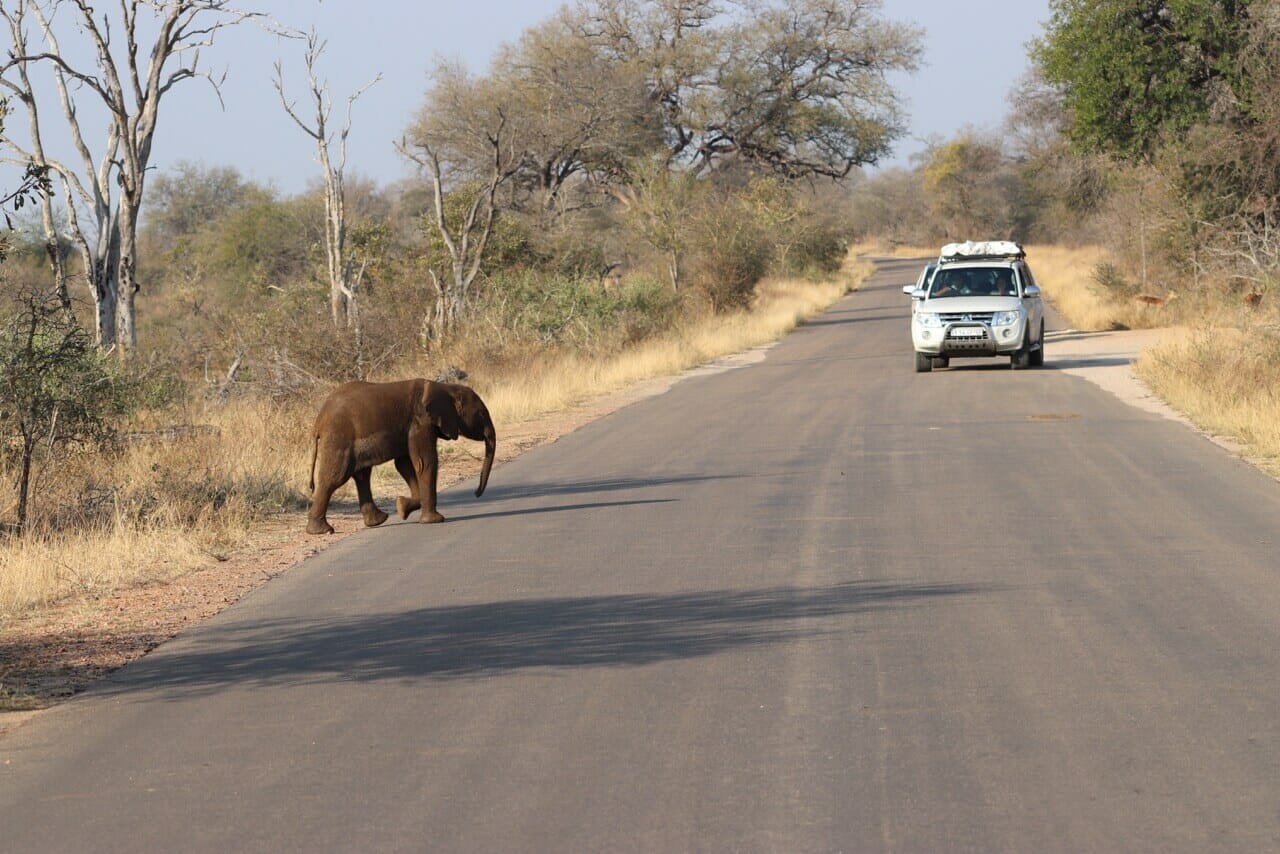
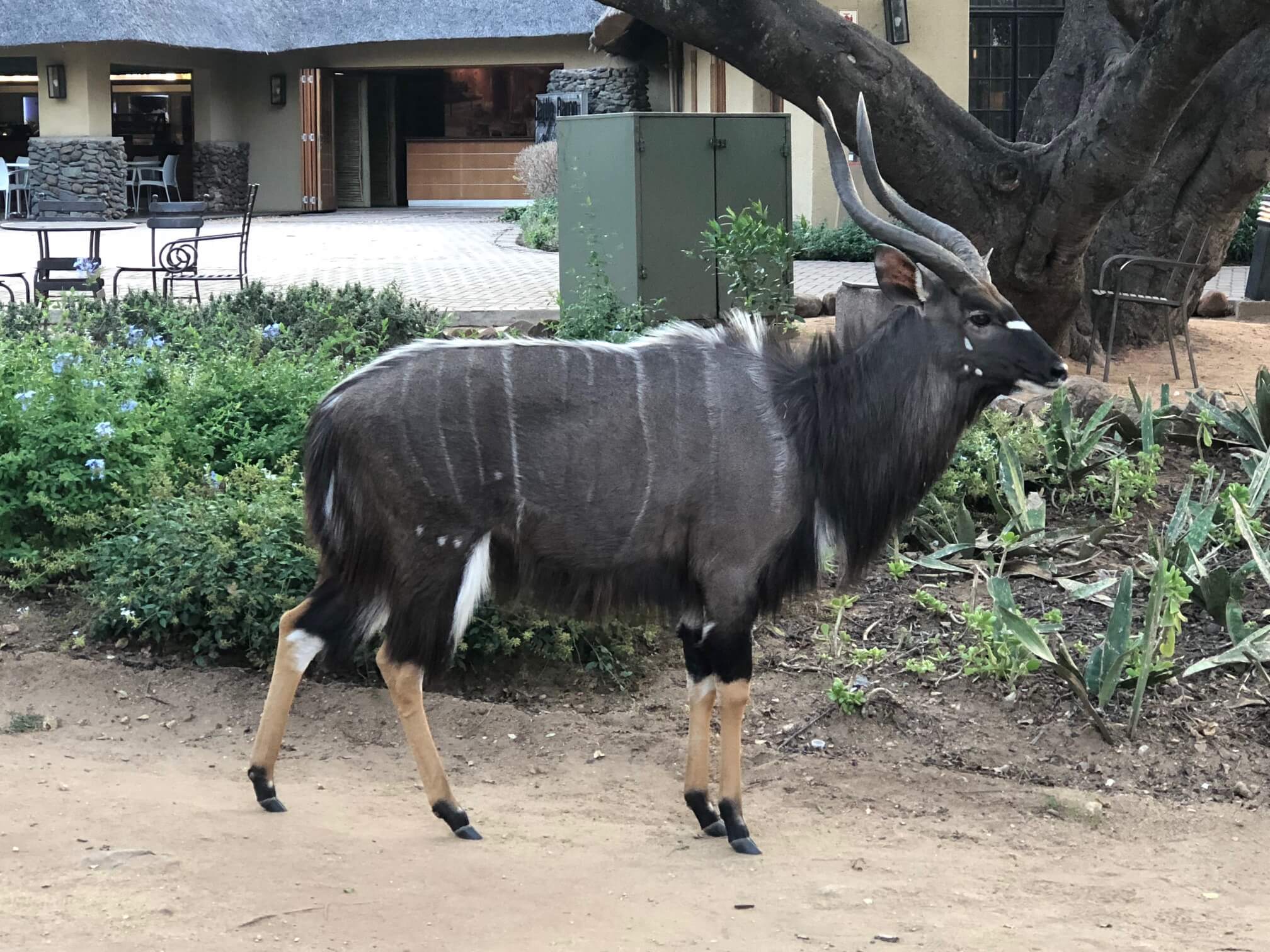

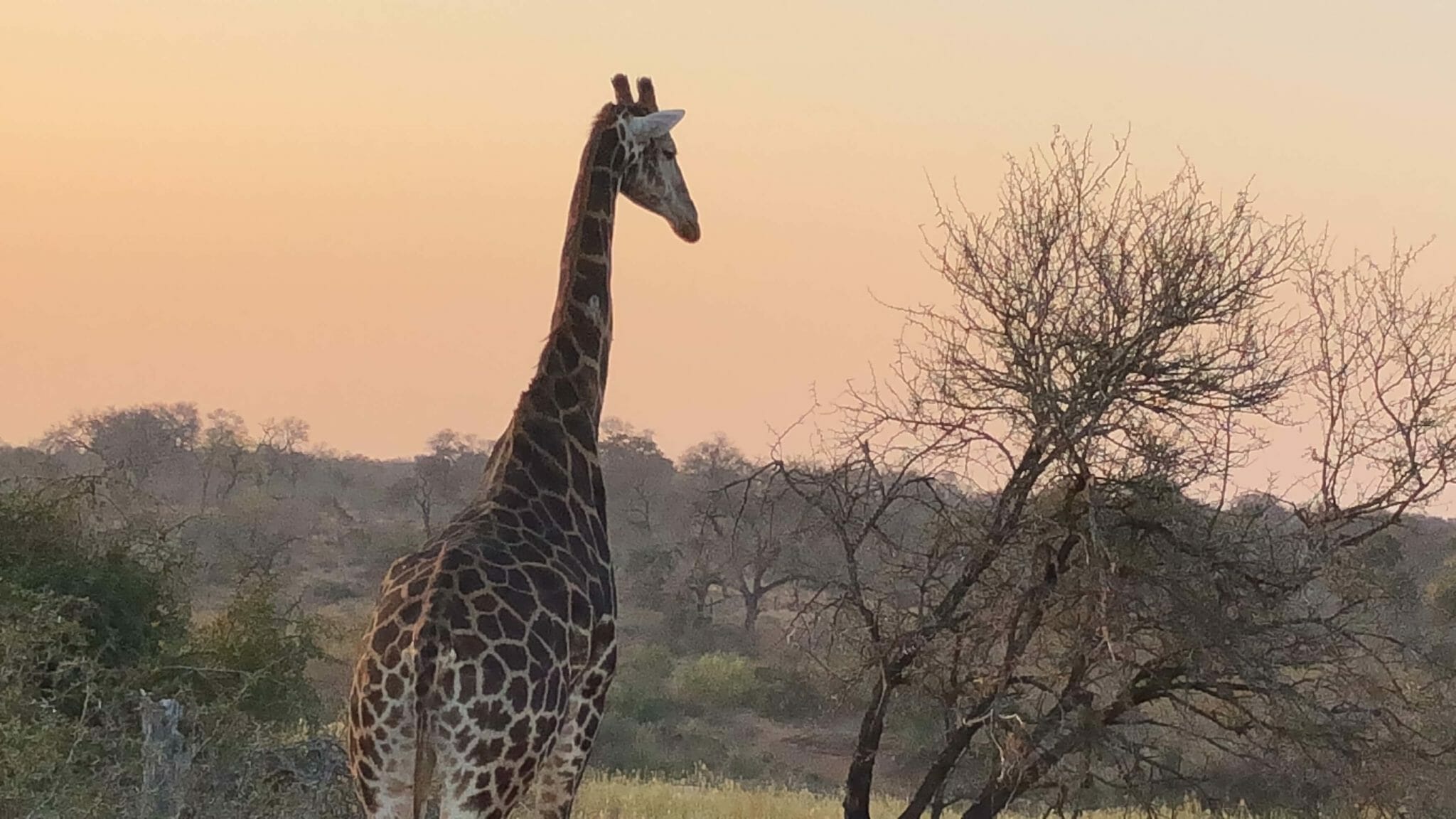


Planning a Sabi Sands & Kruger Park Safari Trip
- Where are Sabi Sands and Kruger National Park?
Kruger National Park lies in the northeast of South Africa, in the eastern parts of Limpopo and Mpumalanga provinces (check the exact location here).
Sabi Sand is a private game reserve that flanks the southwestern section of the Kruger National Park (check the exact location of the Tydon Eco Camp here).
- How to get to there?
There are several ways to get to Kruger National Park ad each one has different costs and implications.
By flight
There are three airports serving Kruger National Park:
Northern Kruger Park: Phalaborwa Airport
Central Kruger Park: Hoedspruit Eastgate Airport
Southern Kruger Park: Kruger Mpumalanga International Airport (KMI).
There are daily flights from Johannesburg to the three airports and from Cape Town and Durban only to KMIA.
The only airport located in Kruger National Park is Skukuza Airport (SZK) which is set within the bushes of Sabi Sand. Airlink, a subsidiary of South African Airways, is the only airline offering direct flights to and from Cape Town and Johannesburg is prices are quite expensive.
You can book your flight here with Skyscanner, which is the website that I use, trust and recommend.
By car
You can hire a car at either of these 3 airports near Kruger Park: Nelspruit, Hoedspruit, Phalaborwa and also at Protea Hotel Marriot Kruger Gate.
By private transfer
There are scheduled shuttle services between Johannesburg airport & Greater Kruger with Ashtons and if this is a great option if you don’t want to drive and a transfer isn’t included in your tour.
- Best Time for a South African Safari
The best season for safari is the dry season (from May to September). During this time of the year there’s less vegetation and animals gather around rivers and waterholes, which makes wildlife easier to spot. There are also fewer mosquitos, the skies are clear and most days are sunny.
- What to pack for your African safari
If you aren’t sure of what to wear on safari in Africa, below there’re some tips based on my experience and what people from Sabi Sands said to me.
– Choose neutral tones and light fabrics, preferably cotton, because these fabrics work best in a hot climate.
– Pack about 3 t-shirts and 3 pairs of shorts. Do not pack white shirts, red, which attracts animals (just in case you’re doing a bush walk), and if you are going into an area where Tsetse flies are present then you should also avoid the colours blue and black.
– Pack a couple of long-sleeved shirts and a pair of long trousers. During the winter also bring a jacket because it can get very chilly while you’re in an open vehicle.
– A lightweight waterproof jacket is highly recommended during the summer.
– Bring a good pair of trainers (hiking shoes for a bush walk), a hat, sunscreen, binoculars, sunglasses, books and a medical kit. Remember that the Kruger National Park is in a malarial area.
- Safari Tips for first timers
Whether you’re booking a Kruger Park safari with Sabi Sands or any other company, here are some essential tips for your African safari:
– Safari isn’t cheap, but it’s totally worthwhile paying for it.
– When you’re going on a game drive keep your eyes wide open, remain seated and be
quiet while approaching animals.
– If you decide to stay in one of the lodges in Kruger, I recommend booking a guided safari with a private company, because the vehicles offered by the park are big with a capacity for over 16 people.
– Self-drive vs guided safari? You can do a self-drive safari at Kruger Park, but I personally think that doing it with a guide is much better. They are in the park every day and can identify the animals and explain everything about them to you.
– Ask the company if they are offering two game drives on a day (sunrise and sunset), or if it’s a full-day safari. When you spend the whole day in the park you can cover more ground and see different areas and probably animals.
– Bear in mind that nature is unpredictable. One day you can see many animals and on the other, you may not find one of the “Big Five”.
- Book your Kruger Park Safari Tours


- Book Your Flight Find deals on airlines on my favorite search engine: Skyscanner. Be sure to read my How to find cheap flights article.
- Rent A Car Rental Cars is a great site for comparing car prices to find the best deal.
- Book Accommodation Booking.com is my favorite hotel search engine. But Hotels.com and Hilton Hotels have very interesting reward programs.
- Protect Your Trip Don’t forget travel insurance! I always use World Nomads for short-term trips and SafetyWing for long-term ones. Find out why Travel Insurance: Much More Than a Precaution, a Necessity.
- Book Tours in Advance Book unforgettable experiences and skip-the-line tickets with GetYourGuide or Viator .
- Book Ground Transportation BookaWay offers a stress-free experience with secure payments and no hidden fees. You pay online and receive your itinerary by email.
- Luggage Solutions Rent your luggage with Cargo or if you need to drop off your own luggage and enjoy your time without dragging it all over a city, find a LuggageHero shop here.
- Get a Travel Card Revolut Card is a pre-paid debit card that enables cash machine withdrawals in 120 countries. I’ve been using my Revolut Card for over a year and never paid foreign-transaction fees again. Get your Revolut Card with free shipping here.
- Packing Guide Check out my How to Pack a Carry-on Luggage For a Five-month Trip to help you start packing for your trip. Don’t forget your camera, chargers and other useful travel accessories. World Nomads provides travel insurance for travelers in over 100 countries. As an affiliate, we receive a fee when you get a quote from World Nomads using this link. We do not represent World Nomads. This is information only and not a recommendation to buy travel insurance.



Great blog post! We spent a day exploring Kruger, and actually almost got arrested at the crossing out of the park! The self drive was great though. 🙂
Hello Zachary.
Thanks for sharing it with us.
This is crazy!! Not sure what to say about this situation, but I believe that they wanted some money.
You know, when you said that there were monkeys trying to get into your car, I assumed that the area you parked wasn’t safe / appropriate.
I do think that they have cameras in the whole park and saw you breaking the regulations. Otherwise how would they know?
Anyway, I’m glad that in the end everything worked out though.
Cheers and take care of yourself 😉
Apparently the stop with the monkeys was the one place that was a sanctioned bathroom! They had concessions and signs to not feed the monkeys. But of course we didn’t have to use the bathrooms there. It was only a few hours later after our beverages (!!!) that we had to go. So pulled over safely to do so.
Oh well, it was a good time anyway. 🙂
This is such an incredible post. The sabi sands kruger park safari is so amazing. Thanks for information.
Thank you!